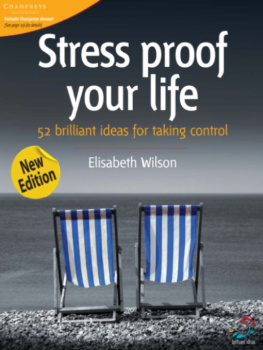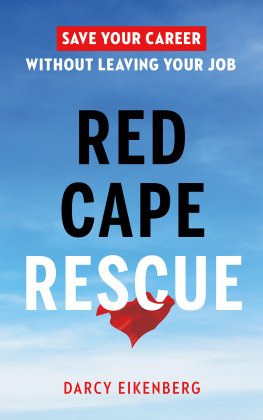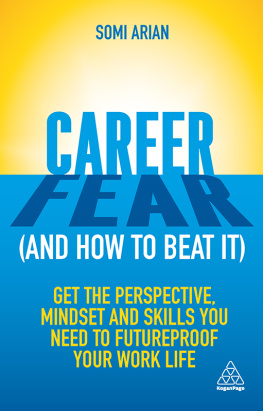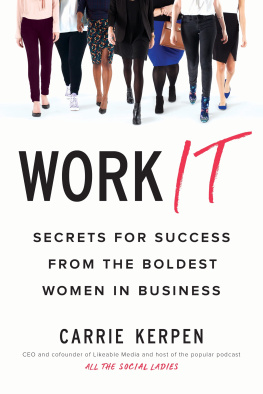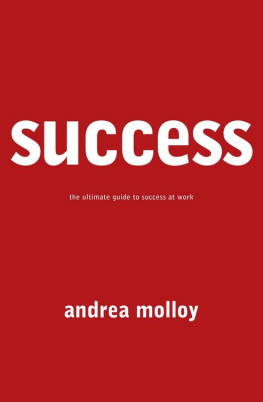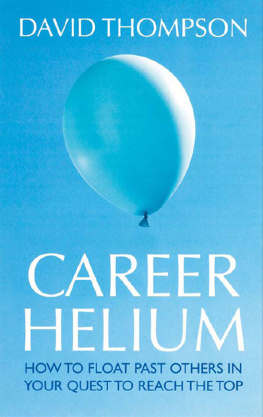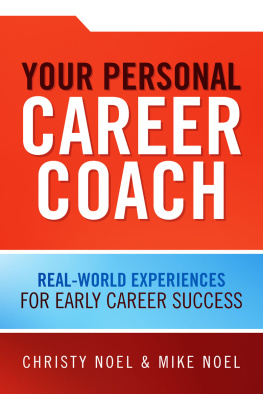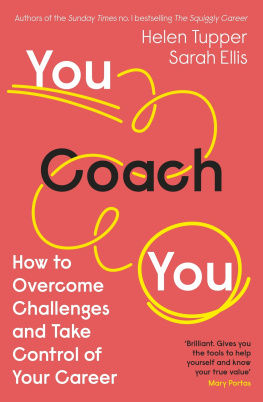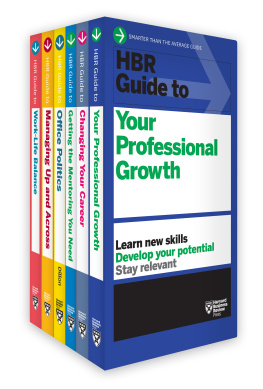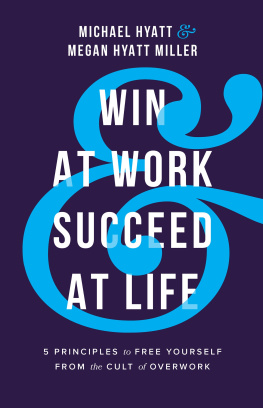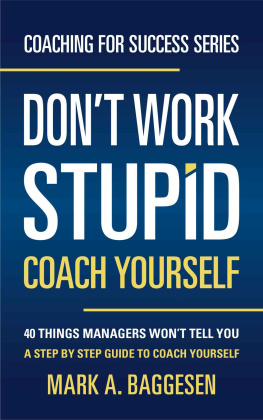The Ultimate Career Coach
Everything you need to know to succeed at work
Infinite Ideas with Ken Langdon, John Middleton and Elisabeth Wilson

3. Know your strengths
Want to get ahead? Then focus on your strengths. A good starting place is to ask yourself: What am I naturally good at that other people find hard to do?
If you were stopped on the street and asked to list as many of your strengths and weaknesses as quickly as possible, which list do you think would be the longest? We all know the answer to that one.
The majority of us would probably struggle with our strengths but be able to reel off a long list for our weaknesses. Were notoriously good on puffing up our weaknesses and dumbing down our strengths.
Were all born with a portfolio of strengths that develop and grow as we do. Some of these strengths emerge naturally and are often qualities and talents we were born with. Charlotte Churchs natural strength is obvious singing. The strengths we are born with often dont feel hard to exercise. We develop other strengths as a product of the environment we were raised in and from experiences we pick up along the way. Consider these your acquired strengths.
But what about the things youre good at doing but dont enjoy? Do these count as strengths? Im a good cook but I dont advertise this as one of my strengths. Because on a day-to-day basis cooking is not something I really enjoy. I do it because it has to be done. Not quite a natural talent but a strength I learnt growing up. It used to irritate me being called into the kitchen by my mum when I wanted to be outside playing like my brothers. But it meant I developed a skill in cooking.
If someone asked you outright to outline your strengths, could you say them out loud without mumbling and stuttering? Most of us would probably rush through them in embarrassment, just wanting to get the whole thing over and done with. OK you might brace yourself to appear confident in an interview or assessment centre but most of us would rather do a bungee jump than have to proclaim our strengths out loud.
But there is a danger in not acknowledging your strengths. Youre more likely to live a life thats based on your weaknesses and find yourself constantly trying to catch up with yourself, rather than taking a more assertive approach and focusing your life on the things you enjoy doing and are good at.
Next step is to get clear on what your strengths are. But a little pep talk before we continue. In order to get ahead in this game youre going to have to agree not to generalise. That means naming things. So, saying youre good with dogs will not be considered a strength. It will only be validated when you specify exactly what breed of dog you are particularly good at working with. The same goes for the statement Im good at communicating. Again, this says nothing about the communication skills that you have. Your job is to flesh out the detail that might be obvious to you but not to others. Im good at teaching people how to dance, or I help and support people who are trying to work through conflicts in a relationship. Again get specific. No detail, no strengths. At the same time, dont make the mistake of only looking in the obvious places for your strengths. Look to your losses for strengths that may have emerged from there. Youll notice as you start being specific and detailed that this ensures that the strength is defined as something that you can actually do.
It takes a stranger thirty seconds to sum you up. Practise saying your strengths aloud in thirty-second sound bites in front of the mirror.
Heres an idea for you
Ever thought of having more than one type of CV to hand? Have a go at devising a Courage CV. A Courage CV highlights key roles, life challenges, places in your life where you stepped out of your comfort zone, achievements and transformations and things we forget to mention that traditional CVs often leave off. Heres a template for writing your own courage CV. Make a list of ten events from your life that required both large and small acts of courage on your behalf. Whilst this type of CV may not be every organisations cup of tea, it might be a breath of fresh air in some. Having a range of CVs to hand allows you to highlight your strengths in a range of creative forms. Take a peek at Sofias own CV on her webpage www.turnupthecourage.com for creative ways of laying out your Courage CV on the page.
83. Number crunching
Many of us fear numbers, or see working with them as a terrible chore, but working accurately with spreadsheets will quickly show you, and others, if a business is viable.
These financial documents can be a prophetic vision of your financial future; when the hard graft is over each month, those figures you have entered under salary will be your reward.
When creating your financial spreadsheet, you really should be looking to prepare for every possible eventuality that you can foresee over the next three years. Even if your business is going to be in an office or a shop and you are looking to run a transactional website as a bit of a sideline, it could be that web sales will be your major route to market in eighteen months time. Create a row for each and every route to market, even if you are projecting sales to be zero for the first year. Include everything like bank interest rates for loans and overdrafts, even if you are self-funding the business at launch you may have a bank loan in the future and it is much easier to alter the rate of interest and enter an amount that you will be paying every month than it is to create a new spreadsheet.
Break It Down
As well as preparing for all foreseeable eventualities, it is good practice to be as specific as possible with your financial projections. If you are launching a hairdressing salon employing experienced stylists and apprentices, there will be different rates charged to the customers and differences in the cost of sales. Keeping your entire sales figures in one row makes it hard to analyse profits. It is better to create a row for each type of sale. Although the volume of sales through the stylists may be high value, your cost of sales (their salary or commission) is also going to be high. The apprentices will not charge as much for their work, but equally they will not be paid as highly, meaning more profit for the business so it might prove better for your bottom line to employ one stylist and three apprentices than the other way around. The more information that you can present on your financial plans, the better you will be able to understand the full picture.
Pretty Pictures
Presenting the data can be done by simply printing off a copy of the spreadsheet but very few people (apart from maybe an accountant) will be happy with this document. Once the numbers are in, use the software to create more viewer-friendly versions and excerpts of the data. Graphs help readers picture the business and understand the data far more easily than looking at an enormous spreadsheet. Although the viewer might need to refer back to the source document, your message can be displayed very quickly and accurately with a graph. Likewise, in your business plan you should summarise the data with simple one-line statements of fact or intent, e.g. with 47,000 investment we intend to create a business turning over 390,000 with a net profit of 61,000 within our first twelve months of operations.
When presenting data it is important to show when cash is actually going in and out of the business. If the rent bill is 12,000 per annum, display the outgoing funds, broken up into payments, as they will occur, not forgetting to account for deposits and legal fees. Managing cash flow will be the key to making your business a success. Find out what terms your suppliers offer, and always try to negotiate more favourable terms. Suppliers are often wary of new businesses and rightly so, as so many go out of business leaving big debts unpaid. No matter how good your negotiation skills, some suppliers will demand a year of good relations before allowing more generous terms, or for the value of orders to exceed a certain level. The long-term goal is for your business to be selling products or services to your customers, and receiving the cash, before having to pay your suppliers.
Next page


